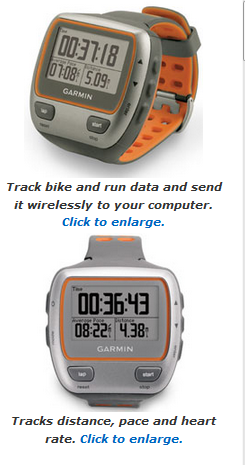What Is a GPS Watch? How Can It Help Me?

 Wondering what exactly a GPS watch is and why it might help you with your fitness and weight loss results?
Wondering what exactly a GPS watch is and why it might help you with your fitness and weight loss results?
Runners are crazy about their GPS Watches.
Right now, this is one the best-selling GPS watches on the market. With a strong 4 out of 5 star rating and over 900 consumer reviews, it makes you wonder what all the excitement is about.
Just look what people have to say about it!
Here are other really popular GPS running watches that runners LOVE:
So what can a GPS watch do to improve your running results?
Here’s a great article from Marisa that explains.
What is a GPS Watch, What Does it Do, and How Can it Help Me With My Fitness Program?
 GPS watches utilize a network of global positioning satellites to precisely track how far and how fast you are running, biking, or swimming. Anytime. Anywhere in the world. It will measure your real-time speed, average speed and maximum speed. It calculates your pace, average pace and best pace, tracks your workout distance, and also functions as a continuous odometer. Whether you’re buying one for yourself or purchasing a gift for someone else, we’re here to help you understand what you’re buying. We’ll guide you to match the right technology for your intended use or to maximize your training or exercise experience.
GPS watches utilize a network of global positioning satellites to precisely track how far and how fast you are running, biking, or swimming. Anytime. Anywhere in the world. It will measure your real-time speed, average speed and maximum speed. It calculates your pace, average pace and best pace, tracks your workout distance, and also functions as a continuous odometer. Whether you’re buying one for yourself or purchasing a gift for someone else, we’re here to help you understand what you’re buying. We’ll guide you to match the right technology for your intended use or to maximize your training or exercise experience.
What does a GPS watch do and how can it help me with my fitness program?
The first thing that comes to people’s mind is that a GPS watch will tell them the direction they’re heading (i.e. North by Northeast) or street address similar to what a car’s navigation system does. This is not true. Although GPS (Global Positional System) watches use the same principles, it is not nearly as sophisticated. Like your car’s navigation system, it communications with the satellites in orbit around the earth to determine your exact coordinates each second while you move. It then sends this information to the watch to calculate your velocity and distance traveled between each set of coordinates.
So why does this matter to me if I’m a runner, cyclist, rower, skier or walker?
Because now you can get the most critical information about your workout that you could never get previously unless you exercised at a track or some other pre-measured course. Namely, how far did I go and how fast did I get there? A GPS watch will provide you with all this information. Here’s some typical data collected from a runner’s workout:
- The Average Speed during the run was 7.5 miles per hour.
- The Maximum Speed achieved was 9.0 miles per hour.
- The Average Pace during the run was 8 minute miles.
- The Best Pace achieved was 6.5 minute miles.
- The Total Distance was 3.5 miles.
- The Total Time was 28 minutes.
This is great information to know so you can target improvements in your exercise program and monitor how you’re performing toward meeting those goals. And you can go anywhere. You’re not constrained by a specific circuit or measured course. Just run, walk or cycle anywhere you want and the GPS watch will perform the calculations no matter where you go. This technology works anywhere in the world because the GPS system is designed to receive information from up to 12 satellites at any one time that are located on the same side of the earth as you. If you’re serious about getting fit or improving upon your current fitness regime, a GPS Watch is a great training tool to own.
So now that you understand how a GPS Watch works and what it can do, choose the model is right for you. Here are the main options to look for:
Heart Rate Monitoring – Some GPS watches come with Heart Rate Monitors so you can gauge your heart rate in addition to your time, speed and distance. The Timex Global Trainer and the Garmin Forerunner 405 both offer this option. In order to reach your fitness goals, you need to train at the right intensity level. Heart rate is the only accurate measurement of your intensity or exertion level. That’s why using a Heart rate monitor is such a valuable part of your training.
Computer Interface – So now you have all this great information in your watch – what do you do with it? Download it, analyze it, and trend it by uploading it into your computer! The Timex Data Recorder works in conjunction with all Timex GPS Watches and comes with cable and software. This item is purchased separately. The Garmin 405 provides computer download capabilities and software as well and are included with the watch. Having this information available on the computer to use with the manufacturer’s tailored software makes it all the more valuable.
GPS Transmitter – Garmin’s GPS device is integrated right into the watch which makes the watch a little bulkier and less suited for daily use. It does have more features however such as Longitude and Latitude coordinates. Timex’s GPS device is a separate component that is worn on your arm or clipped to your waist. Therefore the watch is much lighter which allows it to be used as an everyday watch. Timex has now released its 3rd generation GPS device which weighs only 2.7 ounces. The previous versions were slightly heavier and required more batteries. Although everyone wants the smaller, lighter GPS unit, there is a trade-off. The smaller the unit, the fewer batteries it takes to operate and you’ll need to replace them more frequently.
Target Speed and Pace Alarms – This feature allows you to individualize your performance. An alarm will notify you when you reach preset upper and lower limits for either speed or pace. Timex offers this with their 100 Lap models.
Target Distance Alerts – You can set the watch to alert you when you have traveled a specific distance or multiples of that distance. For example, when this setting is set to “1 mile” the watch will sound an alert when you have traveled one mile and then again at two, three and four miles, etc.
Speed Smoothing – This feature makes pace and speed values easier to read while using the watch by “smoothing” out any small variations in speed. You might want to enable this feature if you are viewing pace information and the displayed numbers appear too “jumpy.” Smoothing has no effect on the accuracy of the data displayed, nor any effect on the distance accumulated.
Lap Memory Recall – This allows you to record separate data for each lap or distance interval. Suppose you run a 5 mile race and you want individual statistics for each mile as well as for the overall race. You would depress the LAP button at each mile mark to reset the Lap data functions so at the end you can compare the data of each lap. Was your 1st and 2nd laps (miles) good, but you faded on the last three? Perhaps you need to work on your endurance. Are your laps better at the end than in the beginning? Then you might need a better warm-up routine.
Timex offers both 50 lap and 100 lap models while Garmin offers 5000 laps for all its models. If you want to keep a couple of weeks of workout data on the watch, make sure it will support enough laps for your purposes.
Auto Splits – This feature will enable the Chronograph to automatically take splits based on time or distance traveled.
Odometer – The watch keeps track of total distance received by the watch.
USA Sport Watches is your comprehensive source for electronic fitness and digital exercise equipment including Timex Sport Watches, Timex Global Systems, Garmin GPS Watches, Heart Rate Monitors, Speed + Distance Sensors, Performance Monitors, Data Recorders, and Pedometers. Whether you are a fitness enthusiast or in training for a marathon or triathlon, we have the training gear to make your workout count!
Compare GPS Watches:


 Amazon.com
Amazon.com












